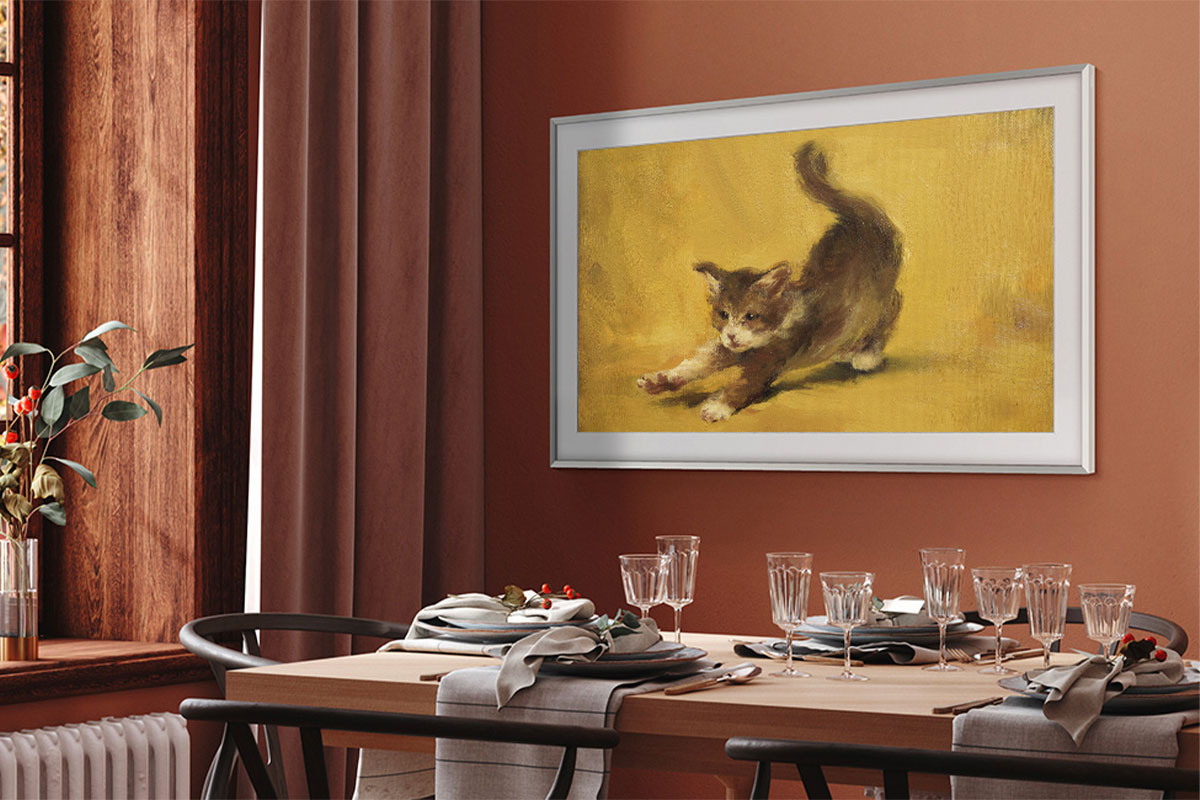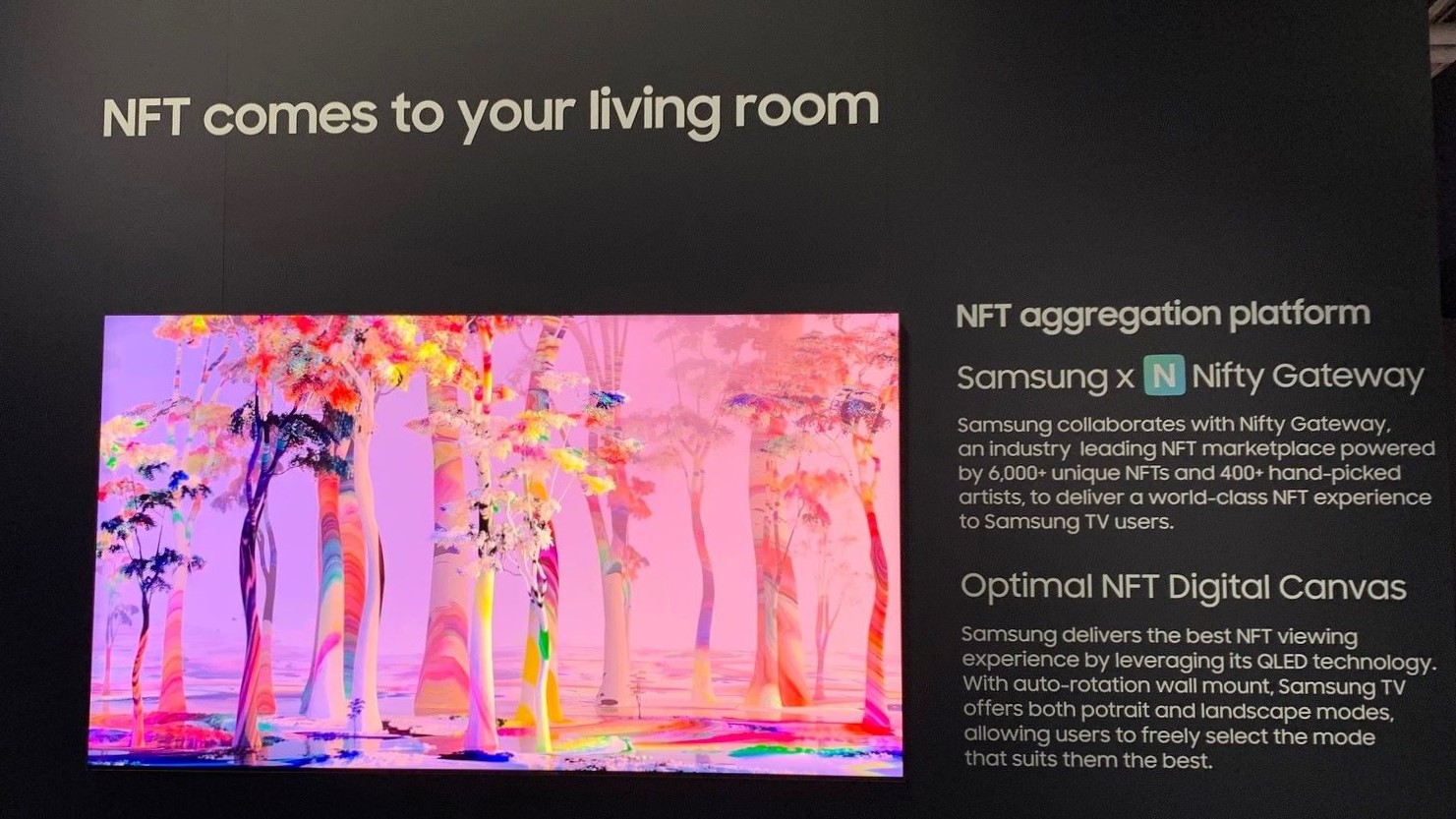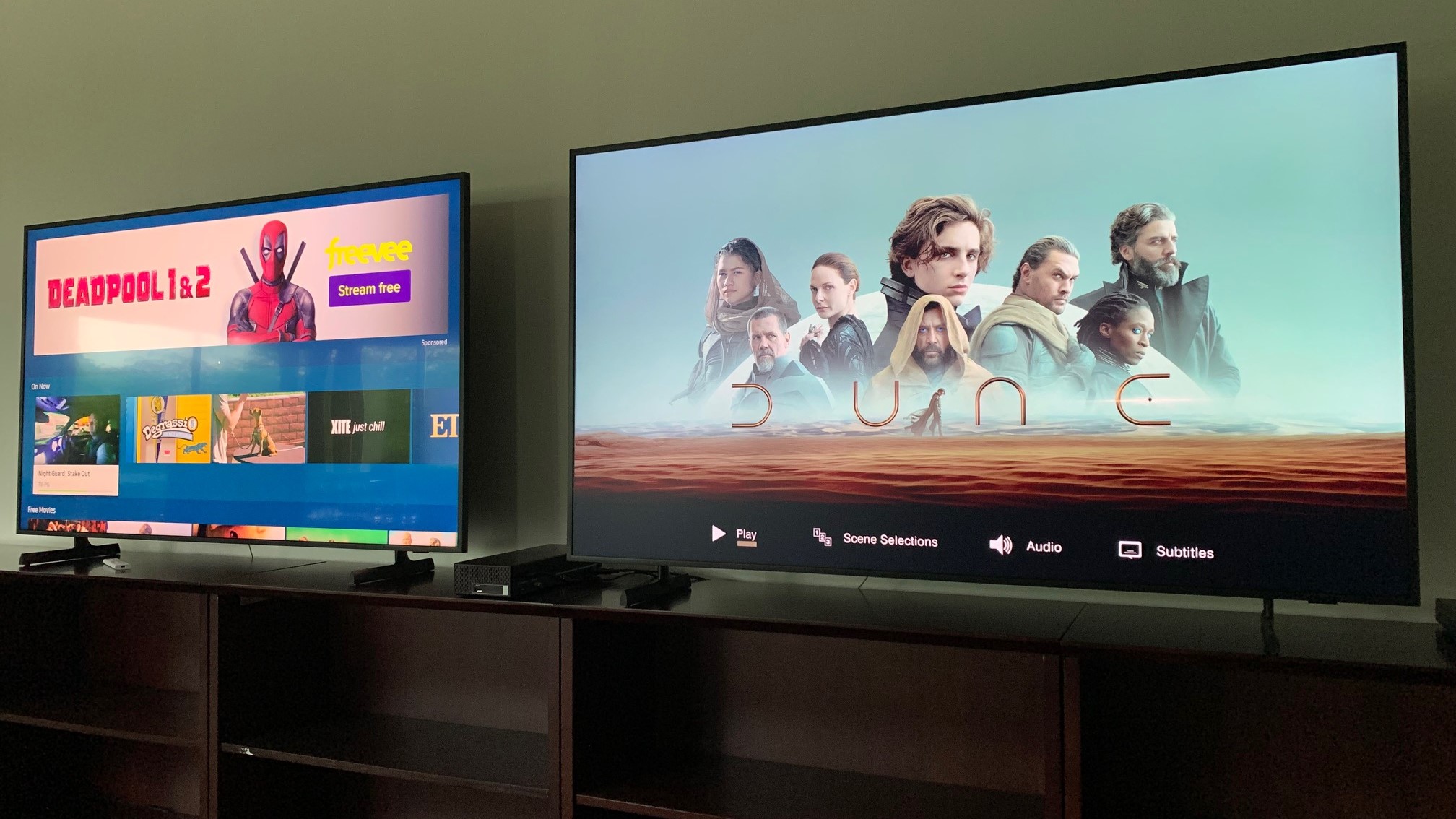I tested Samsung’s 2022 The Frame. Now I need more 4K TVs to display art

When TechRadar recently went hands-on with Samsung’s The Frame at the company’s testing facility in New Jersey, we walked away mostly impressed with the set’s overall performance both as a 4K TV and as a medium for displaying artwork. A significant upgrade to The Frame for 2022 is an anti-glare screen, and the direct comparisons we were able to make with last year’s model proved it to be highly effective.
That anti-glare feature on Samsung’s new lifestyle TVs is an embossed film coating designed to diffuse any light hitting the screen’s surface. Not only does it eliminate distracting reflections from room lighting, but it allows for fine textures in digital representations of artworks like paintings and prints to come through clearly. The effect is simple, but also so beneficial that it’s surprising Samsung didn’t think to include it in earlier versions of The Frame.
Beyond the screen coating, which Samsung calls an anti-glare Matte Display, The Frame 4K TVs are QLED models with a quantum dot layer for displaying an expanded color range, and they are bright enough to satisfy in typical TV viewing situations. While not the best 4K TVs in the company’s line – the QN95B 4K and QN900B 8K models are better bets for video perfectionists – they do what they’re designed to do very well. As an added bonus, they measure up well against the best gaming TVs, with low input lag (we measured 13.2ms) and support for 4K/120Hz video.

TV pictures at an exhibition
My previous The Frame hands-on post focused on picture performance. Now, let’s talk about art.
Like other new Samsung TVs, The Frame models feature an integrated NFT marketplace aimed at collectors wanting to display artworks on their sets. Images are sourced from Nifty Gateway, which offers over 6,000 unique artworks by over 400 artists for purchase and download.
While the NFT angle is, um, interesting, a Samsung spokesman told me that it’s mainly for serious art collectors, a group that would also gravitate toward the company’s sculptural The Serif models. The primary market for The Frame is regular folks who want to eliminate a big empty screen in their home when the TV isn’t showing video, especially if it’s mounted over a living room fireplace. Such viewers will either display their personal photos, take advantage of the set’s pre-loaded art offerings, or download from the selection of 2,400-plus images available on Samsung’s Art Store (requires a $4.99/month subscription), which now offers Salvador Dalí’ paintings by popular demand.
With their slim bezel design, The Frame TVs look good out of the box, but to make them even more picture-like, the company offers a wide range of extra-cost frame options in white, black, red, and various wood finishes ranging in price from $99 to $199. You can also modify the look of onscreen images in the TV’s setup menu, with 5 picture mat borders available in 6 colors.
Sign up for breaking news, reviews, opinion, top tech deals, and more.

Analysis: TVs should not just look good, but have good looks
Samsung’s efforts to make sets more stylish is to be commended. The company has pretty much owned the Lifestyle TV market with its The Frame, Serif, and Sero models, and with this latest version of The Frame, it’s advanced the concept considerably by adding a feature beyond quantum dots that meaningfully contributes to picture quality.
Other TV makers are starting to take notice of Samsung’s achievements in this realm. LG has had its own “Gallery” OLED TVs – wall-hugging models with disappearing bezels – available for some time, and those sets offer a Gallery mode for displaying art that’s similar to the Art mode on Samsung TVs. But LG Gallery sets like the company’s OLED65G2 are also high-end, high-performance TVs, and they are priced as such.
How dedicated is LG to the OLED-as-art concept? The company recently showcased its OLED Objet Collection at Milan fashion week. This new line, which consists of the 65-inch Easel and Posé (55-, 48-, and 42-inch) models, come with easel-like stands similar to ones used to display physical art. The Easel also features a fabric cover that can be controlled by the TV’s remote to conceal and reveal the screen at will.
No word yet on pricing for the OLED Objet Collection, which is scheduled to launch later this year, but given the high price of LG’s latest Gallery G2 OLEDs, they are bound to be expensive.
Samsung’s The Frame sets, in contrast, are relatively affordable, ranging in price from $600 for a 32-inch screen size to $4,300 for an 85-incher. (The 65-inch model we took for a hands-on test is priced at $2,000.) The Frame TVs are a good example of a company artfully giving the people what they want, and doing it at a reasonable price. Let’s hope that other TV makers soon follow suit.

Al Griffin has been writing about and reviewing A/V tech since the days LaserDiscs roamed the earth, and was previously the editor of Sound & Vision magazine.
When not reviewing the latest and greatest gear or watching movies at home, he can usually be found out and about on a bike.